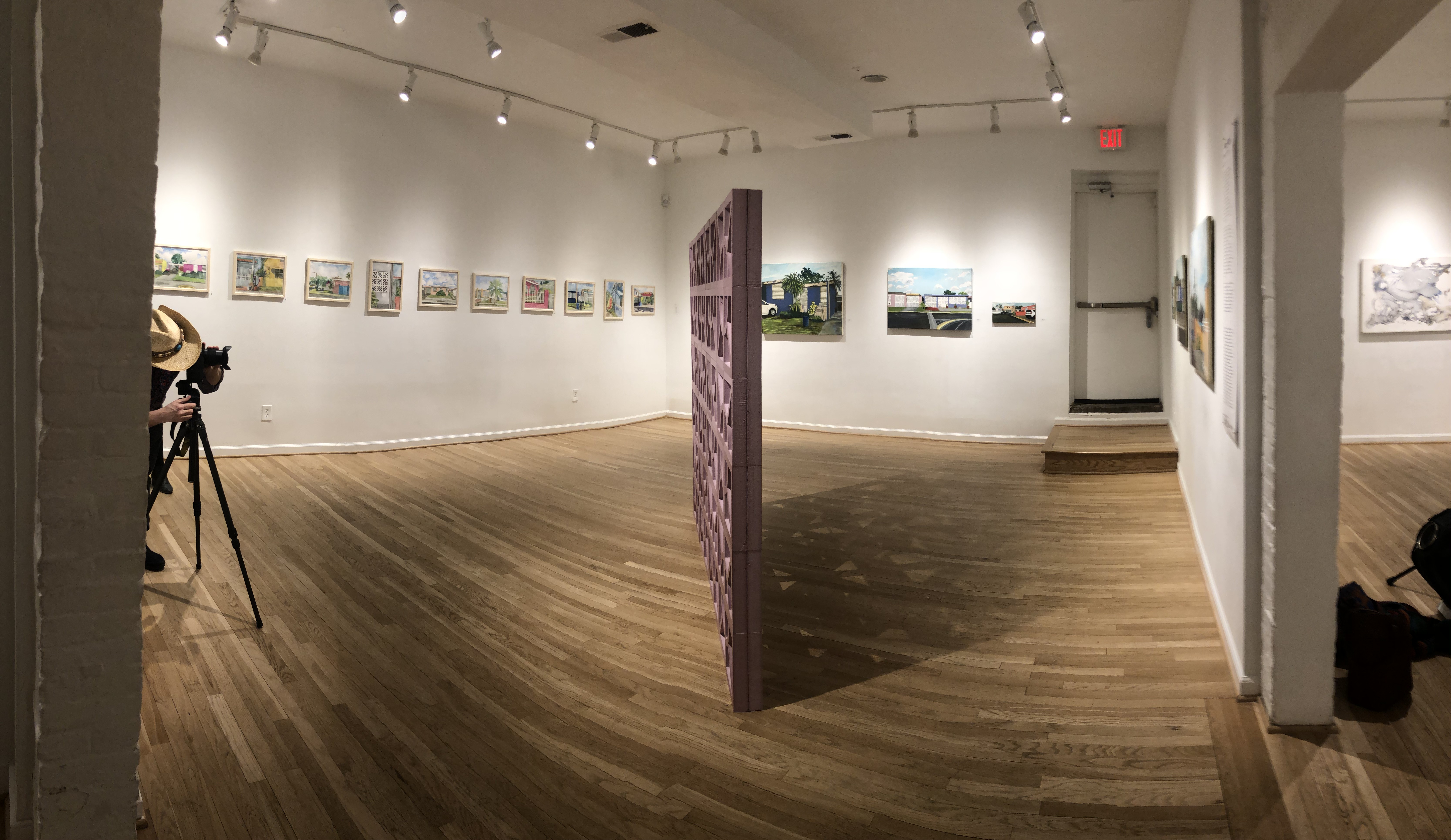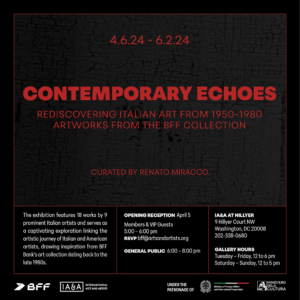Neil Forrest is an artist and professor at Nova Scotia College of Art and Design in Halifax, Nova Scotia, and taught at the Oslo National Academy of the Arts in Norway. He has exhibited at the Denver Art Museum, the Museum Hilversum in The Netherlands, and the Cheongju Biennale in Korea, and has received Established Artist’s grants from the Canada Council and the Norwegian Artistic Research Council.
The Washingtonian Service was on view at Hillyer on January 3 – February 2, 2020.

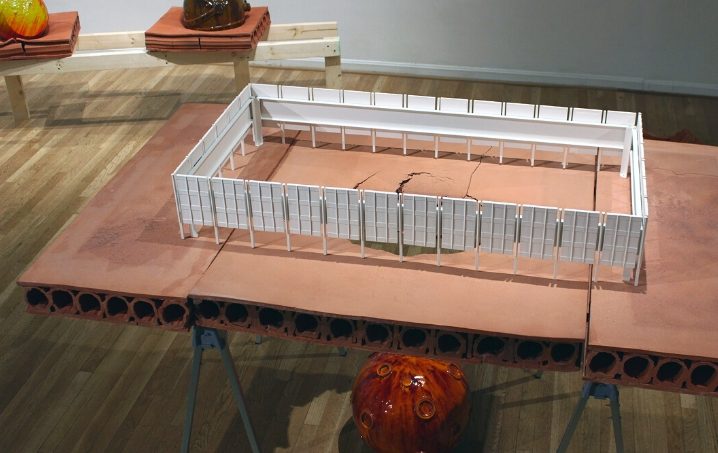
There are a lot of different ideas explored in your exhibition at Hillyer. Can you give us a short summary about The Washingtonian Service?
I wanted to discover something specific to Washington and incorporate it into my own interests around architecture, landscape and pop culture. The Washingtonian Service hosts the chance collision between a celestial object with a contested landmark, giving me a chance to forecast a cosmic problem that might have originated in an artistic disagreement about a building.

You are from Canada and your work references a Washington, D.C. landmark. How did you decide to make the Martin Luther King Jr. Memorial Library the centerpiece of your exhibition?
Part of my juvenilia was to draw buildings. My father’s desk was perpetually covered in blueprints of institutional buildings, and these severe representations became my boyhood companions. Much later and in conversation with architecture colleagues, architect Mies van der Rohe would be discussed for the way he used the I-beam as a kind of signature for his vision of modernism. He co-opted an element of structural engineering as ornament, and configured his buildings into elegant monoliths. Mies presented a jarring revision of architecture.
In the past few years I’ve tried to use the notion of ‘place’ as a means of generating ideas. An artist friend of mine always studies geological maps prior to travel. I look for architecture that I can visit. In preparation for Hillyer, I began searching in journals for something that formed Washington’s modern identity, and found newspaper articles about the controversy over Mies’ selection for this important civic commission. It was immediately clear the Mies’ Martin Luther King Jr. Memorial Library was the artistic irritant that I wanted.
The MLK Library was a work of modernism unlike any other in D.C. at the time, for which every citizen could form an opinion. People did. Academics and aficionados might appreciate it, the city’s youth might come to love it as a new home for their imaginations, and yet others would find it dark, unwelcoming and even detestable. The burden of selecting an emblem to represent the aspirations of a golden age is fraught, and the 1960’s MLK Library spotlights the risk of art and architecture in creating an identity. For me, the Mies-designed library became a kind of antagonist.
As I began to think about the Hillyer exhibition, the idea to formulate a story around a miniature building reminded me of the greatest centerpiece of all, Napoleon’s Egyptian Service commissioned for Josephine. I went to London to see it in person as I started the project, having known it through photographs. This ceramic paraphernalia was meant to glorify his (in)famous expedition to conquer Egypt, and was composed of exquisite replica temples and monuments, plus a fleet of painted dinnerware. My installation would work in this tradition of European centerpieces and would exploit the same whiteness of Sèvres porcelain. This would distinguish my model from the black finish that Mies favoured in the actual MLK library.
To make a model that might come close to the precision of Sèvres, I arranged for accurate digital drawings (which would also respect the Mies commission), and these files were exported to a CNC machine in order to mill plaster molds for the porcelain model. This was undertaken by a talented student of mine in Seoul, South Korea.
As Washington itself is the place of contests, I came to think that the Mies’ library was much like a stadium or even the Coliseum. Eventually it became a catastrophe story-line that was organized around a celestial body that collides with the earth – and into the library. When I went into my studio and experimented with how to make the necessary impact, I realized it needed the force of a real collision to be convincing. I would make a heavy clay ‘meteor’ and drop it from a ladder. A dozen test drops later, I had punctured a proper hole, as though by a meteor strike. Since I had filmed the test ‘drops’, I decided to loop all of them together and project them in the gallery, hoping to pull back the curtain on the artistic process.
With the MLK model are other celestial bodies who I auditioned for the role of primary collider: there is an astronaut (represented by their helmet); a ‘bunhead’ (the head of young ballerina with her knot of hair); and lastly, a portrait of Musa McKim (American painter/poet, married to Philip Guston, a celebrated and controversial painter). I couldn’t bring myself to choose just one, so I included them all on a bench behind the centerpiece.

Ceramics is the underpinning of all of your work. You also included a performative element in this exhibition. What draws you to ceramic work? Do you always include ceramic elements or do you sometimes use other mediums (such as the video in your Hillyer exhibition?
Yes, ceramics and drawing are my main tools. I inherited my love of drawing from my father, and it was him who brought home a bag of wet clay from a Montreal ceramic sculptor when I was thirteen. I was immediately enraptured and never lost interest in the medium, and later became fond of its rather peculiar history and artistic discourse. As my work has taken the form of installations for a long time, I am careful to ask myself the most appropriate way to make something, and with what materials.
After debating this thoroughly with myself, I usually re-negotiate the content around what I imagine to be interesting in clay. Contemporary art mostly dictates the concept for a work of art has a logical material outcome, but I think that notion is didactic and prescriptive. Disciplinarity should have novel outcomes as well.
I arrived at this particular set of questions because of the physical dialogue with the plasticity of clay, and you soon realize that this elastic material pushes you in certain ways, towards a certain vocabulary of form. And form will lead to content. It’s very hard to know what comes first, but most of my ideas succumb to the immediacy of clay. Ceramics supports the gamut of sensibilities for the artist – it can be rough and expressionistic but also precise and cold, and I attempted this range for the Hillyer installation. I wanted some pieces to be rougher, some more elegant and crafted.
Ceramic glazes can be engineered for a wide colour spectrum and a highly unique palette because refractory (heat resistant) pigments behave differently when mixed within different fluxes. For the glazed spheres and portrait heads in The Washingtonian Service, I brushed different lead glaze layers and when fired in the kiln, the minute particles of pigment were drawn downward by gravity at different rates – these glazes really move and mix in the high heat. When cooled, the result is highly variegated colour with striations, veins, staining and dripping. I am passionate about fritted lead glazes (lead is now manufactured to eliminate toxicity), and because lead produces a remarkably shiny glass with a powerful impact on colour. When one becomes experienced in clay and glazes, you realize that it’s’ a charismatic medium so completely dependent on the geology and mineralogy of this crazy planet.
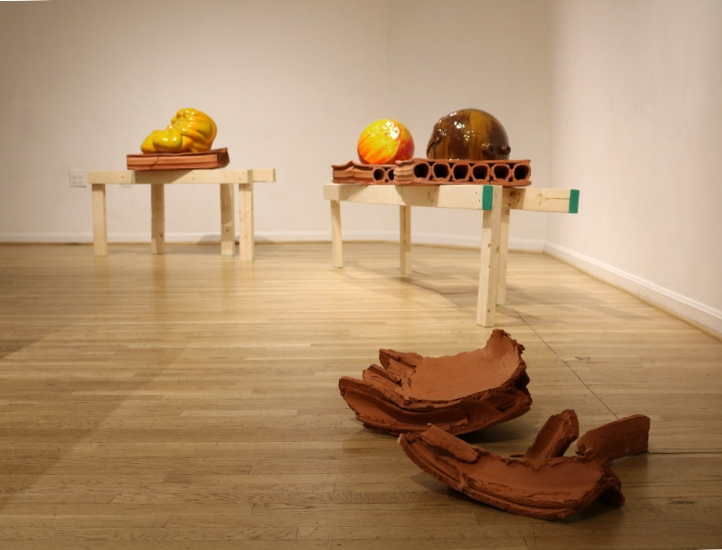
The work you showed at Hillyer was very specific to the city it was being exhibited in. Will you show this specific group of work again in other locations? If so, will you reinterpret it to be site-specific?
A curator in Arizona had told me that one of my works would not appeal to his audience – it was based on four ships used by the Norwegian heroes of early arctic expeditions. Although we settled on a different work, I began to see that place-specific or place-referential installations could be deemed to have limited interest beyond their borders.
Being too particular, an artist might alienate an audience if no one grasps the idea or cannot find their own relationship to it. It could be argued that it’s incumbent on an artist or writer to develop the reasons why readers should care about Tacoma or Toronto. Yet, we read novels that scavenge the uniqueness of Tacoma or Toronto to great effect.
One of my favourite artworks is by the French artist Pierre Huyghe and entitled “This is not a time for dreaming”. Had he not made it a captivating and beautifully naïve puppet show, the presentation could have been opaque to viewers who didn’t know him or Le Corbusier. I saw a single photo of the exhibition and was enthralled. Only later was I to understand that Huyghe used marionettes to tell a fanciful story of meeting the architect Le Corbusier (also French, and who had much earlier won the commission for the Carpenter Center at Harvard, where Huyghe was invited to exhibit). Even though my knowledge of this Huyghe’s artwork is now richer for knowing his motivation, my narrow interpretation didn’t deter me from immediately loving it.
The question of how much we should know about an artwork is addressed by the thinker Susan Sontag in her essay “Against Interpretation”. She cautions that form must not be separated from content, and that meanings can be over-interpreted and suffocating. It seems to me that artists connect things, and sometimes the connections are not designed to be logical, and in fact depend and benefit by their discursive and inconclusive nature. This is a very long way of saying that I have no plans to modify my installation were I to exhibit in a different venue, and it would be a Washington story wherever it goes. In the future I might add or subtract, but that would be more about impulse and the propulsive instinct to evolve. And if The Washingtonian Service is exhibited only once, I’m grateful to have had the opportunity.
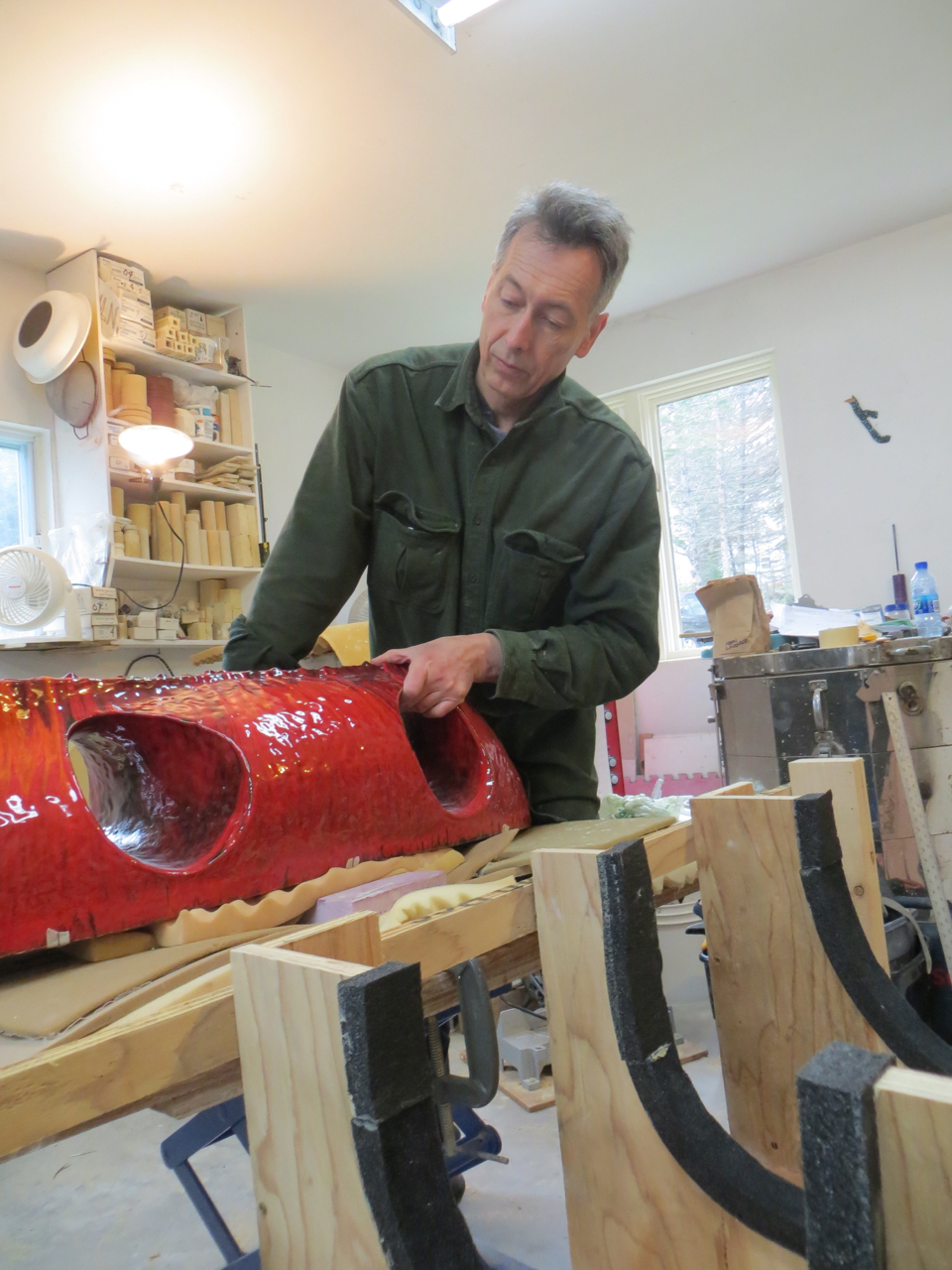
What’s next for you? Do you have any exhibitions or projects you are currently working on?
I’m developing an idea for an exhibition by curator Anna-Marie Larsen whose overarching question is, “what are the connections to be made between ceramics and architecture”?
My current plan involves long, tapered Greek-type amphorae leaning against a raised viewing platform. I’m imagining this as a way to express the interior anatomy of a wooden ship hull – and am therefore proposing that ships are a class of architecture. I’m using both the viewing platform and contours of the amphorae to imply the curvature of the hull.
Usually amphorae carry cooking oil and grain, but inside mine will contain small models, partially submerged in water, describing several contrasting stories. Water is a massively suggestive environment: unstable, formless and immersive. It shifts the narrative.
Some of the amphorae models will be sourced from Canadian history – one that I’m thinking about is the loss of the Franklin ships in the quest for Northwest Passage in the high arctic, but another story is more personal, and I’m considering a portrait of my mother. Each of these memories are in my possession…I belong to both but in different ways. This project would be like constructing a personal grotto, and the grotto is a gesamtkunstwerk: an ark, tomb and library wrapped into one.










